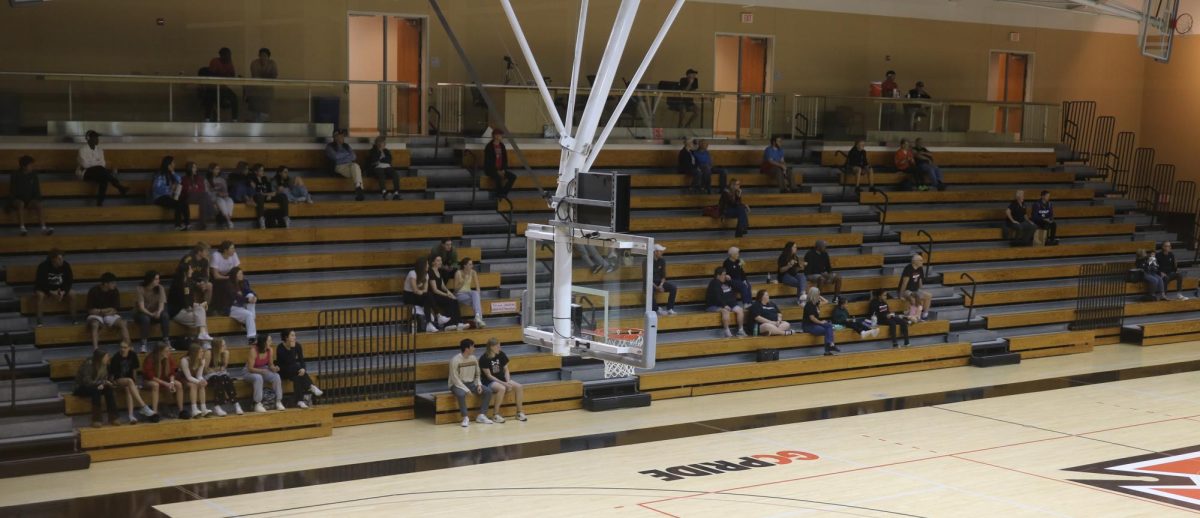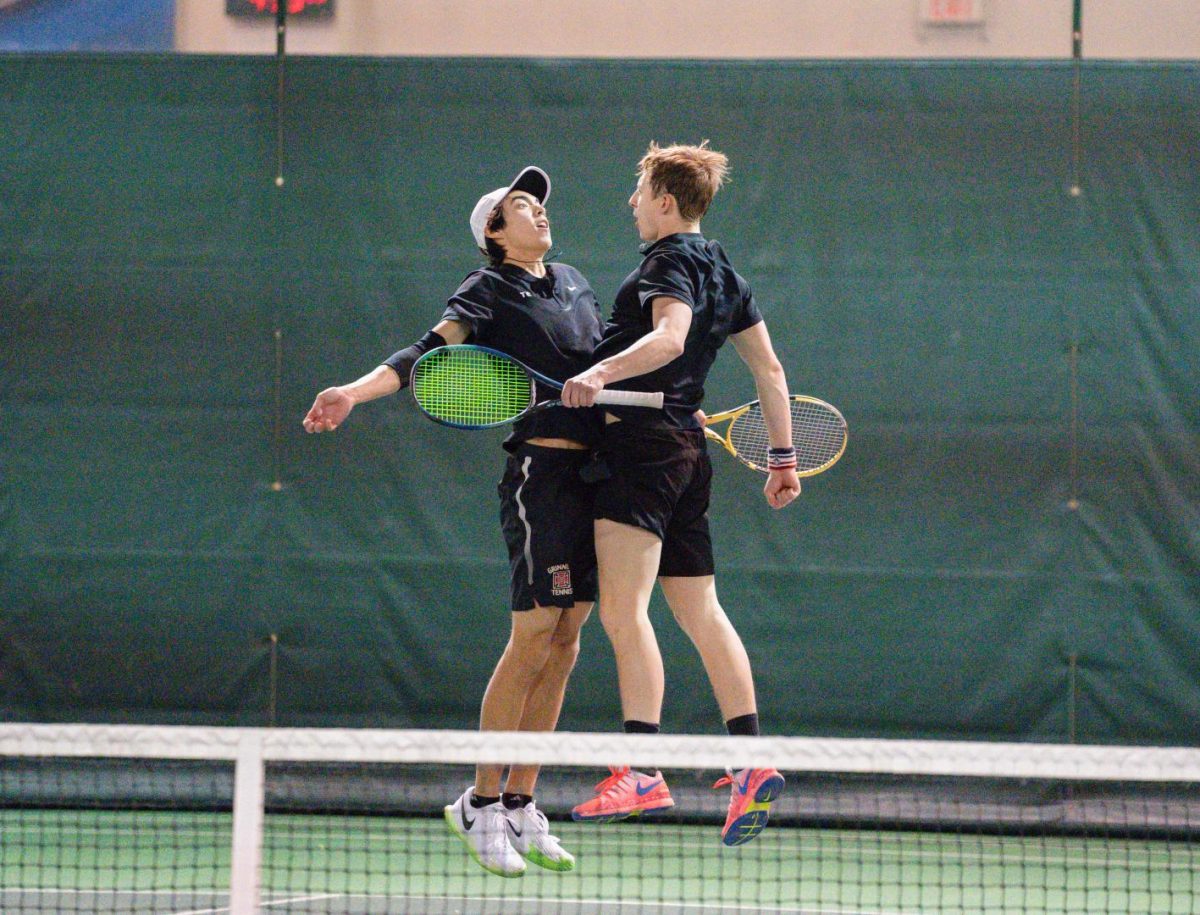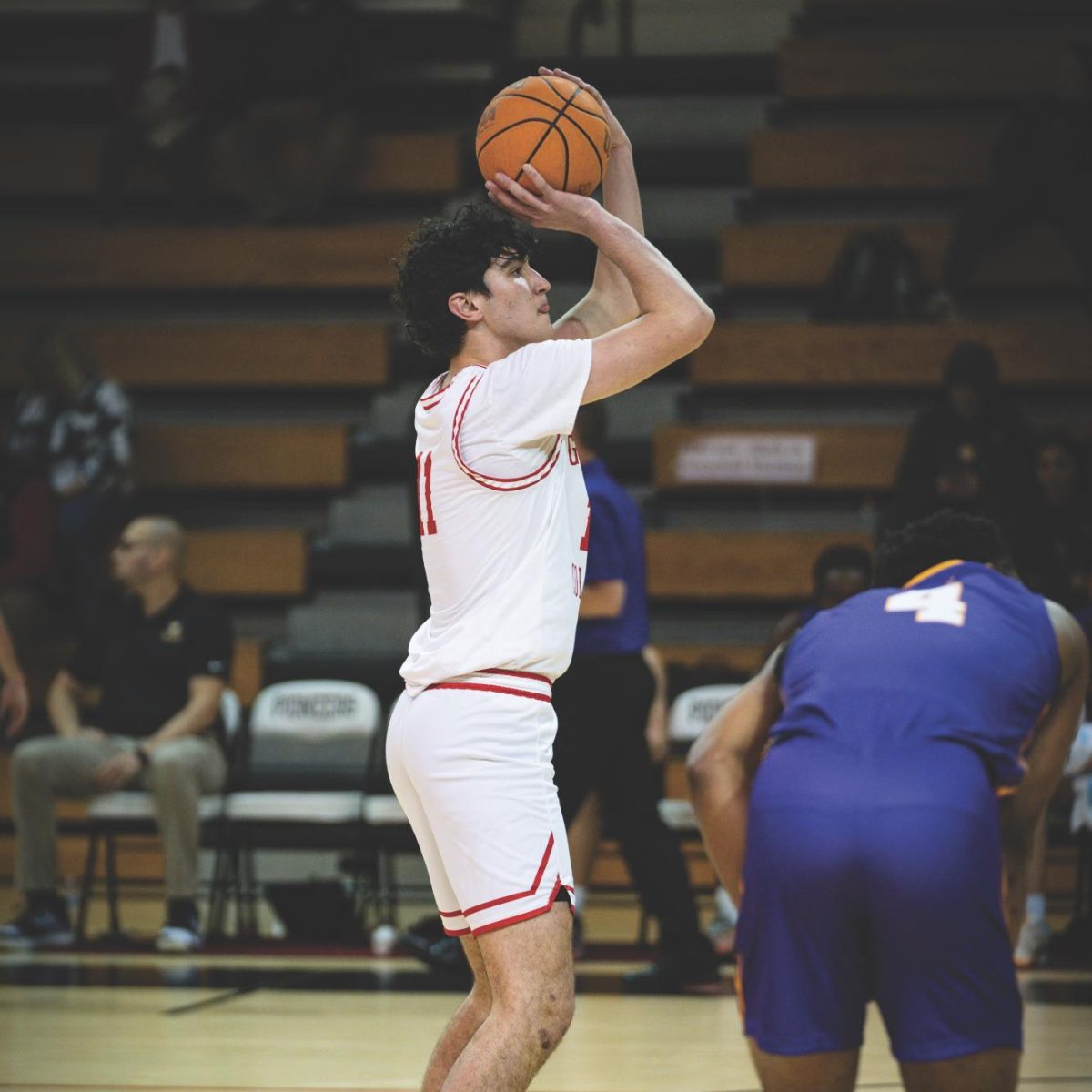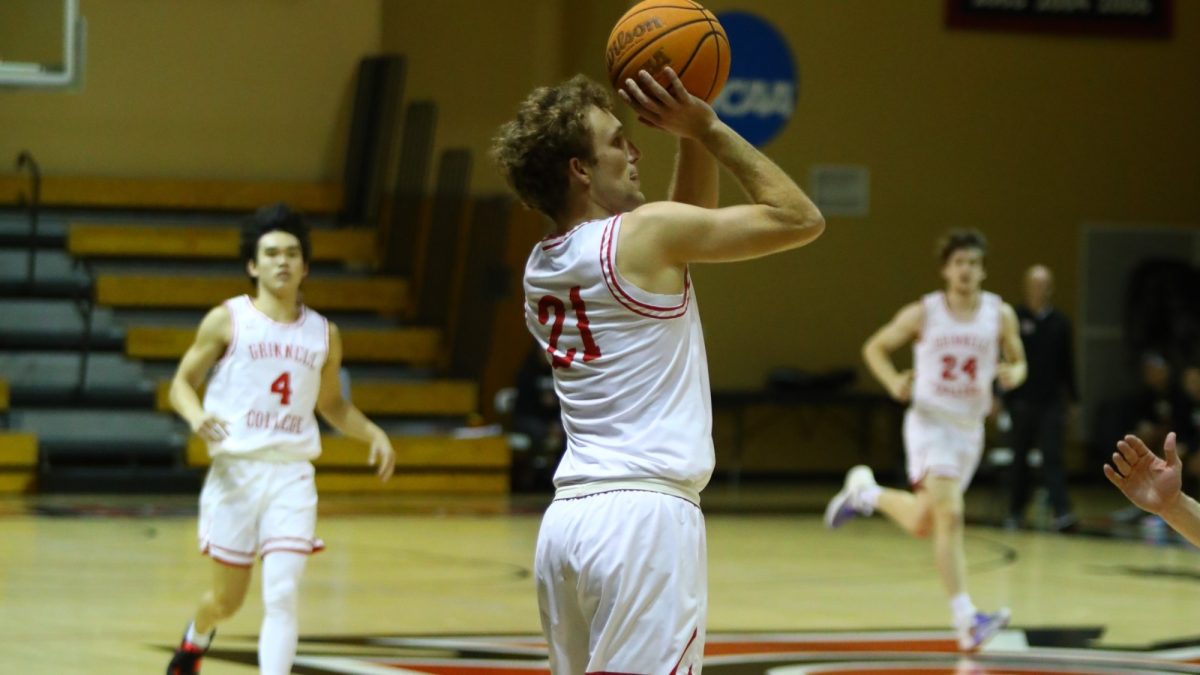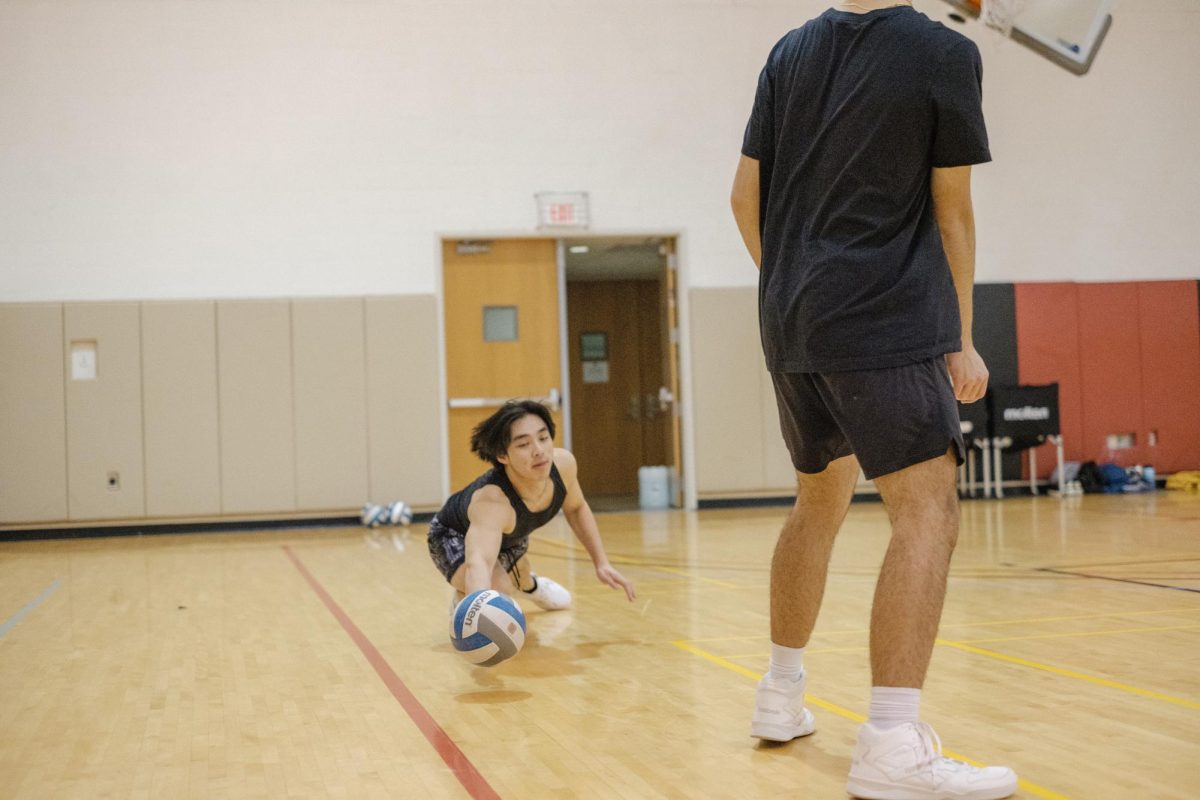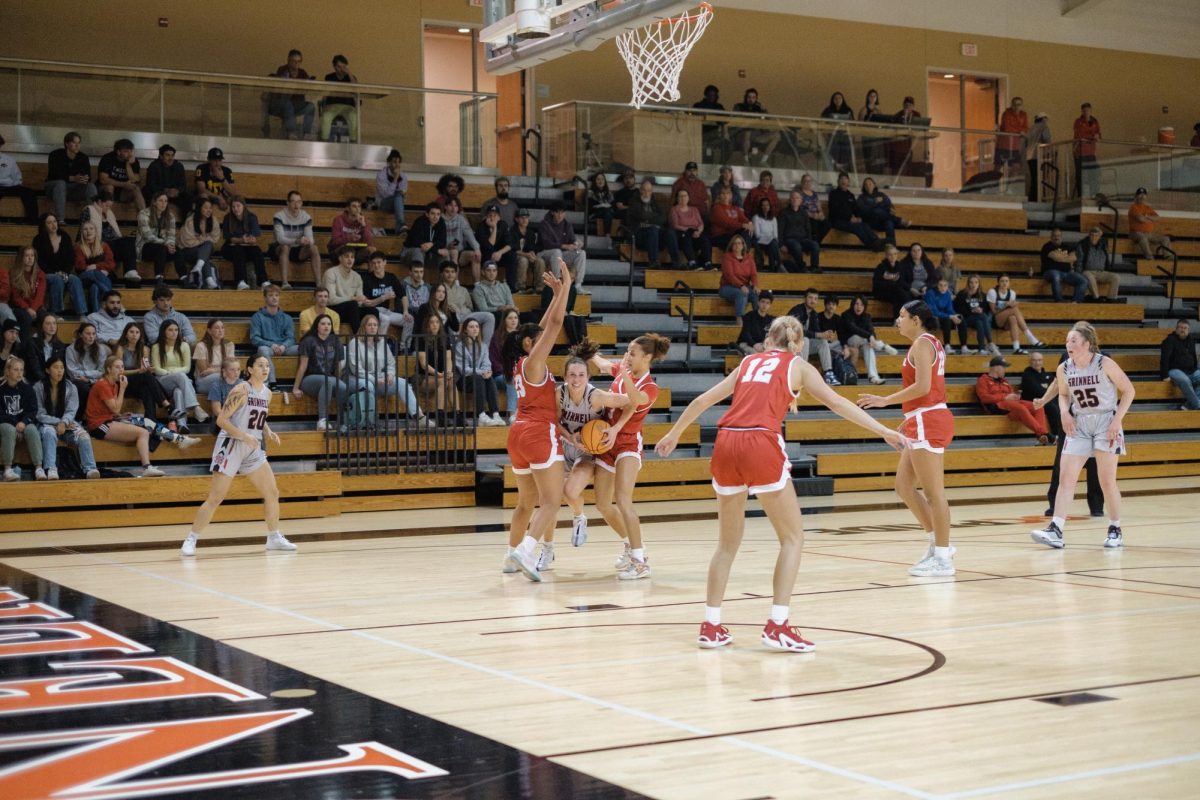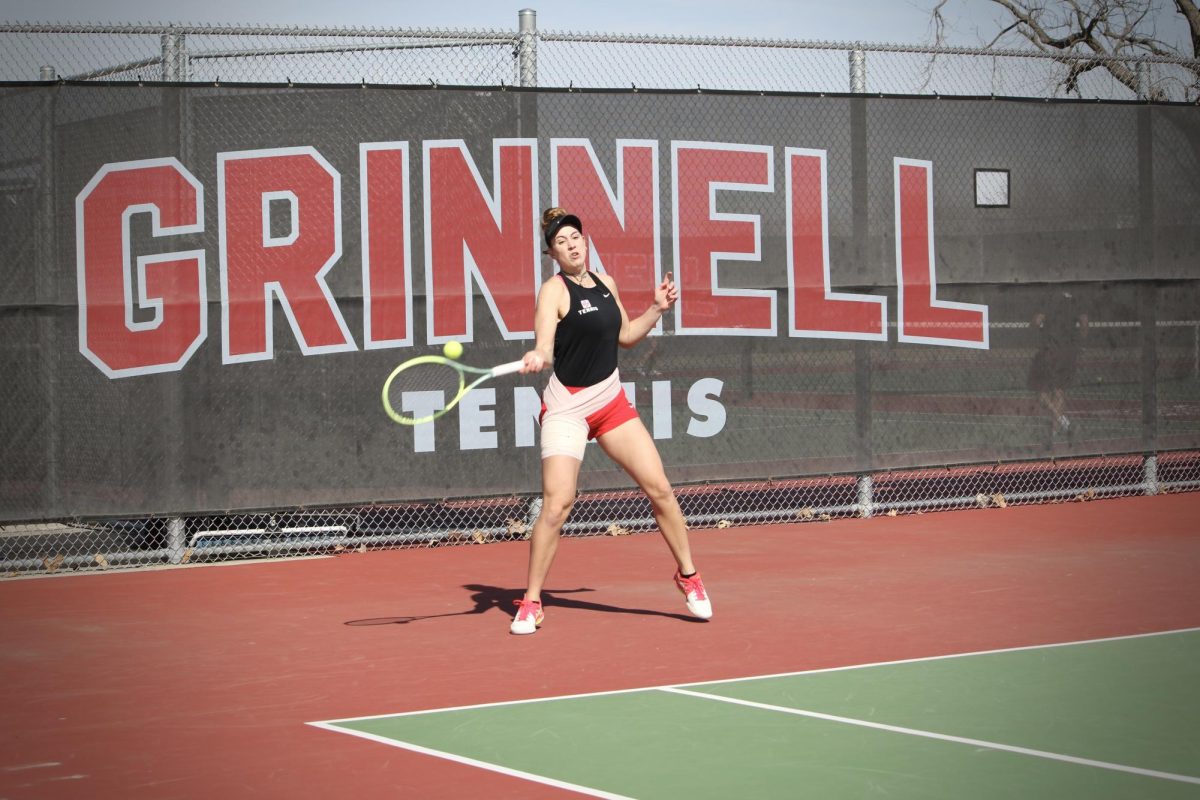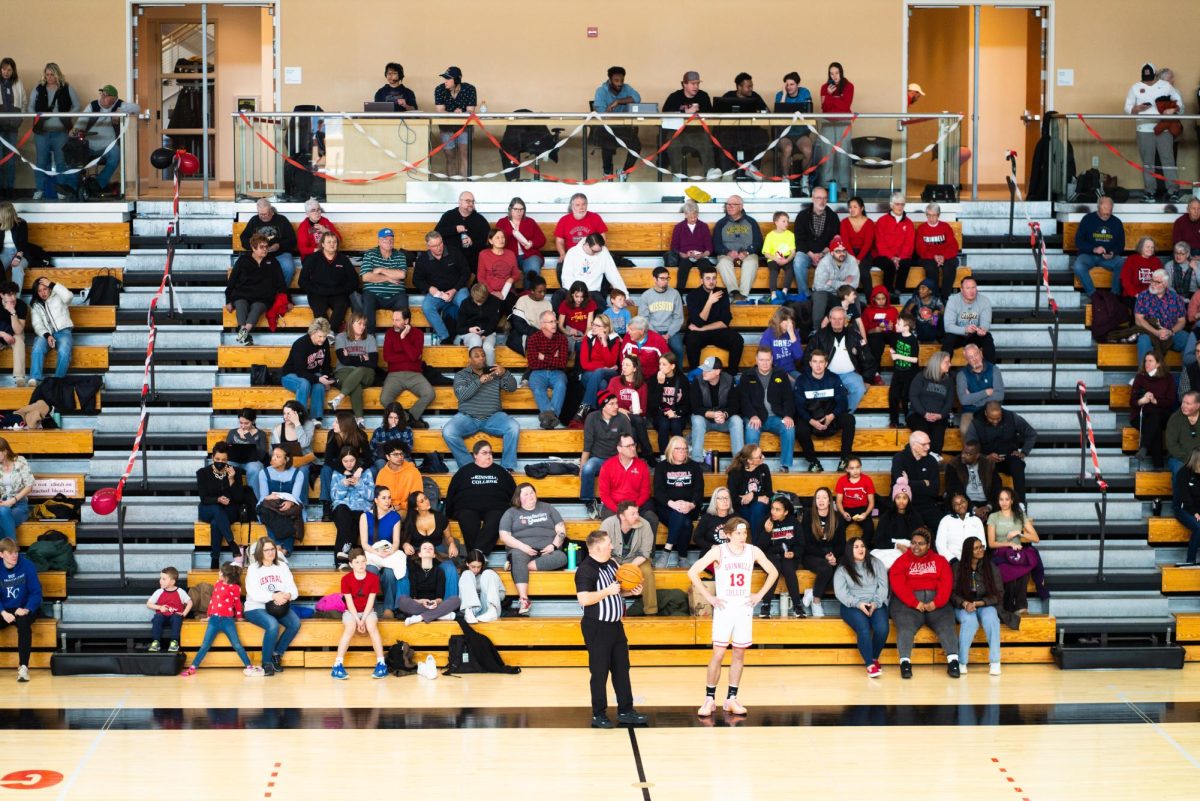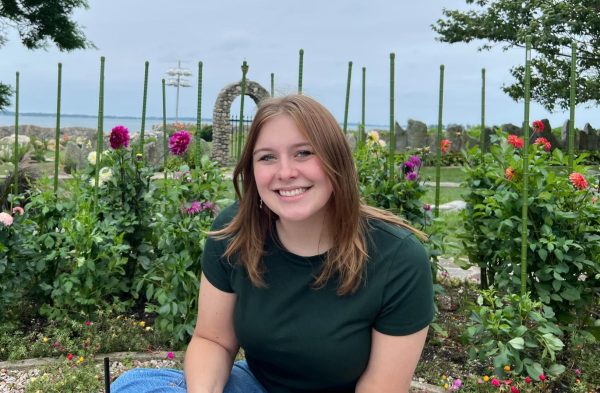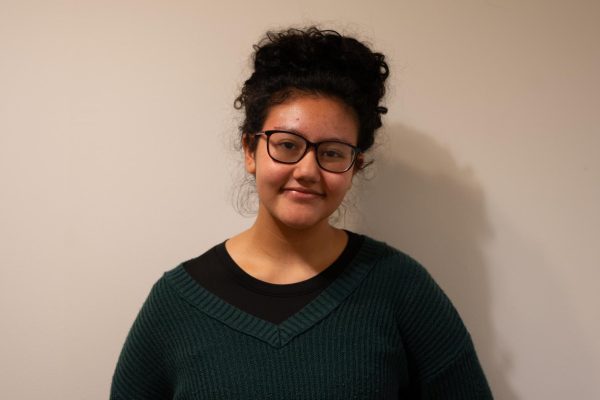Hot on the heels of defending their Midwest Conference championship title, one might expect the Grinnell women’s soccer team to draw large crowds to their competitive home games. Yet anyone who attended Tuesday’s game against Monmouth College would have inevitably noticed the large empty spaces on the three concrete stands. After winning 3-0, only three Grinnell fans beside the team itself cheered and clapped amidst a small crowd supporting the rival team.
It’s no secret that at Grinnell, not many people besides athletes regularly attend sporting events. And although athletes, the athletic department and College administration are adamant about the benefits of athletic community, belonging and spectatorship, they remain uncertain as to how to bolster support.
According to Carter Benson `24, goalkeeper for the men’s soccer team, Grinnell athletic culture is “pretty tight-knit. I think outside of that, people are just on different schedules, and Grinnell is a demanding school academically.” He added, “It’s not like Grinnell is known for its sports.”
Tali Berk `24, forward on the women’s soccer team, also acknowledged the lack of spectatorship even at home games. “I think our expectations [are] pretty low,” she said.
“I don’t think anyone’s expecting a huge turnout to these games,” agreed Benson.
Berk continued, “It’s normally pretty noticeable when the other team has more fans than us.” On Tuesday’s game against Monmouth, families and supporters of the rival team far outnumbered fans in Grinnell gear. Berk said that spectatorship and enthusiasm at events “changes the ambiance and can even turn around an entire game.”
“We definitely want to increase spectatorship,” said Jani Springer, assistant athletic director for diversity, equity and inclusion and student success. “Nobody wants to be out competing when the stands are empty.”
However, she said, “It’s difficult for us internally to try to bring people in.” Springer said that the myriad activities on campus are both a blessing and a curse when attempting to bolster attendance and enthusiasm for sports. Both Springer and the athletes who spoke with the S&B expressed some uncertainty as to how to entice more nonathletes to fill the stands.
We definitely want to increase spectatorship. Nobody wants to be out competing when the stands are empty.
— Jani Springer, assistant athletic director for diversity, equity and inclusion and student success
“There’s more to our school than sporting events. I think it’s pretty divided in terms of interests,” said Benson.
But more than simply having a lot going on, athletes and nonathletes noted a social divide between themselves, whether it be perceived or real.
“I felt it was visible on the very first day I was at Grinnell. I could tell there was this divide, but people didn’t want to talk about it,” said Carter Ottele `25, a member of the ultimate frisbee team, an athletic club team on campus. As a contributing writer for the S&B last year, Ottele wrote an investigative series regarding the campus cultural divide between athletes and nonathletes.
“Almost all athletes that I spoke to wish that more people came to their games, especially more nonathletes. People felt that there was this lack of spectatorship,” said Ottele, “and they were annoyed by that.” At the same time, Ottele said that everyone he interviewed “insisted that they were friends with people on the other side [of the social divide].”
Evie Caperton `25, another frisbee player, also acknowledged the social separations between the two groups. She said she has never sensed any animosity, “it’s just an unspoken, but very distinct, division.” Only until becoming a Student Athlete Mentor (SAM) for the frisbee team last year did Caperton really get to know more varsity athletes.
“I think prior to that I had this notion that athletes and nonathletes just didn’t want to hang out with each other,” said Caperton. Knowing even one person on a sports team, Caperton said, “makes it so much less intimidating to be in an [athletic] space like that.”
Athletes on both soccer teams also recognized the difficulty of branching out socially beyond their semi-insular athletic cohorts. “It’s been harder for us to reach out to people who aren’t a part of athletics because we just don’t see them as much,” said Allison Wehrman `24, a midfielder on the women’s soccer team. Although most players post online to advertise their games, Wehrman said, “I don’t know how much that actually gets people to come out.”
Benson said that he often only sits with other soccer players in the Dining Hall because “that’s just who we know and who we’re comfortable around, so it’s hard to make new friends.” Jane March `24, defender on women’s soccer, also spoke about the tendency for sports teams to only sit with each other during mealtimes, and said, “sometimes it definitely seems a little bit cliquey.”
In addition to this social divide, Ottele said, “I think it’s really hard, though, to go to a school where a lot of athletes just don’t care about sports on a personal level to show up to a football game where the team is most likely going to lose, or to go to a swim relay where you can’t even quite tell who’s on which side.”
I think it’s really hard, though, to go to a school where a lot of athletes just don’t care about sports on a personal level to show up to a football game where the team is most likely going to lose, or to go to a swim relay where you can’t even quite tell who’s on which side.
— Carter Ottele `25
In fact, when he recently attended a golf tournament to watch a friend, Ottele said, “It was kind of difficult to even find where you’re supposed to go because there were no signs. There was nobody watching and I had to maneuver through the course.” Berk and Wehrman also noted the lack of signage for athletic fields, and Springer said the north campus location of the athletic facilities might deter some people who live further away to even know about a game.
“It’s not just about a sporting event,” said March. “It’s more about an event for the community, so it’s okay if you don’t know someone on the team.”
Although only in his third month at the College, J.C. Lopez, interim vice president of student affairs, has already found much pride and excitement in Grinnell College athletics. He said he particularly enjoyed the tailgate before the football game on Family Weekend, as it garnered more people than previous sporting events he attended. “I really do think support and spectators affect performance,” said Lopez.
When he previously worked at DePauw University, also a National Collegiate Athletic Association Division III school, Lopez said there could be up to 500 students attending a football or soccer game. Although he acknowledged the comparative dearth of engagement with Grinnell athletic events, Lopez praised athletes, coaches and athletic department staff for their accomplishments, specifically noting that last year alone, Grinnell continued to lead all league schools in the Midwest Conference All-Academic Team with 260 honorees. “There’s a lot to celebrate,” he said. “We’re really lucky.”
Every person who spoke to the S&B for this story addressed the benefits of participating in athletic culture. “If you experience that great environment, you want to experience that again. There’s a sense of community and belonging,” said Lopez.
“We cheer for each other so hard, but it helps to know there are other people cheering you on. It’s fun to put on a show in front of an audience and not to just play in front of your own teammates.” said Wehrman. At the men’s soccer game against Monmouth College on Wednesday, nearly the entire women’s team huddled together in the stands and on the grassy hill. Between shouts of encouragement for the players and dismay at some questionable referee calls, the women’s team shared inside jokes, silly cheers and detailed thoughts about schoolwork and footwork.
Although Ottele said that most people go to Division III schools “knowing that sports aren’t going to be as important,” athletes and administration hope to continue working to increase support for and belonging in athletic spaces.
“I see other teams supporting other teams, which is actually incredible,” said Lopez. “It’d be great for us to just figure out how we can invite others into that.”
Gabriela Rożnawska contributed reporting.




























































